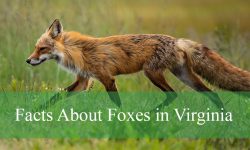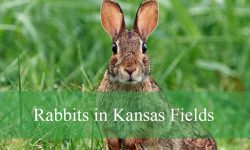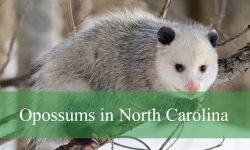California’s diverse ecosystems, including oak woodlands, chaparral, and grasslands, provide ideal habitats for a variety of wildlife. Among the most notable and increasingly problematic are the feral pigs that roam the state. These pigs are not a single species but a mix of wild and domesticated pigs, each with unique characteristics and behaviors. Understanding their differences is crucial for wildlife management, conservation, and reducing human-wildlife conflicts.
Feral pigs cause significant ecological and economic impacts, affecting agriculture, native habitats, and even public safety. Their adaptability and reproductive capacity make them highly invasive. In this article, we focus on three types of feral pigs found in California: the Eurasian wild boar, the feral domestic pig, and the javelina (collared peccary). We provide detailed identification tips, behaviors, diet, reproduction patterns, habitats, and control strategies.
Eurasian Wild Boar (Sus scrofa)
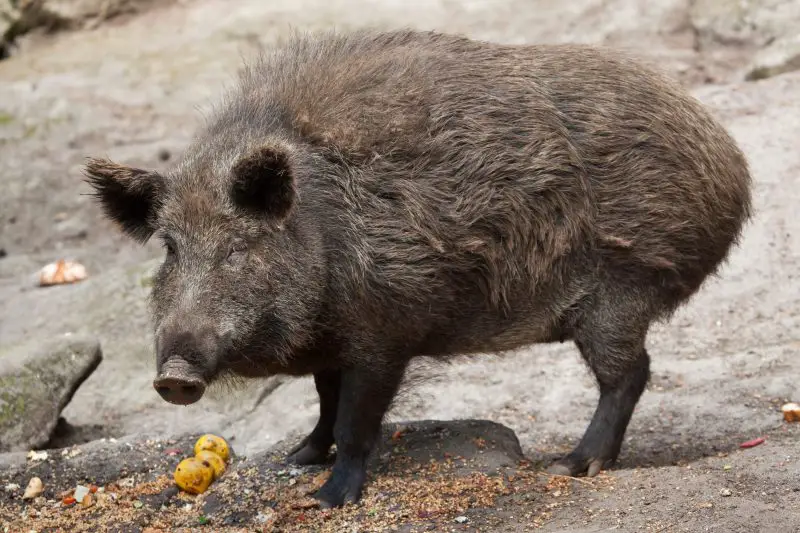
Identification and Physical Characteristics
The Eurasian wild boar is a robust and muscular animal, easily recognized by its thick, bristly coat that varies from dark brown to black. Adults typically stand about 2.5 feet at the shoulder and can grow up to six feet in length from head to tail. Males are generally larger than females, weighing between 150 and 300 pounds, while females are somewhat smaller and more compact.
The most distinguishing feature of this species is the long, curved tusks found on males, which serve both foraging and defense, whereas females possess smaller tusks. Their snouts are strong and highly sensitive, allowing the boars to root efficiently in the soil in search of food. Along the back, a prominent mane of bristly hair adds to their characteristic appearance, making them easily identifiable in the wild.
Behavior and Diet
Eurasian wild boars are highly adaptable omnivores with a versatile diet. They feed on roots, tubers, acorns, fruits, small vertebrates, and occasionally carrion. Rooting behavior is a hallmark of the species, as they dig extensively into the soil to uncover edible material, which can result in erosion and significant damage to plant communities.
These boars are primarily nocturnal but may also be active during daylight hours, particularly in cooler weather or in areas with low human activity. They are generally solitary or travel in small family groups called sounders. Known for being territorial, males may engage in aggressive behavior to establish dominance, yet the species is also an excellent swimmer and runner, capable of moving quickly through rugged terrain.
Reproduction
Female Eurasian wild boars reach sexual maturity at around 1.5 years old and typically give birth once per year. Litters generally consist of 4 to 13 piglets, depending on food availability and environmental conditions. Piglets are born reddish-brown with light stripes that help camouflage them in dense vegetation. The young remain with their mother for several months until they can forage independently.
Habitat in California
Eurasian wild boars are highly adaptable and occupy a wide range of habitats, including oak woodlands, chaparral, riparian areas, and grasslands. They are present in nearly all California counties and are particularly dense in northern and central regions, where forests and water sources are abundant.
These boars often cause significant damage to agricultural fields, gardens, and natural areas due to their rooting and foraging behavior. Their ability to thrive in both wild and human-modified landscapes contributes to their widespread distribution across the state.
Ecological Impact
Wild boars disrupt ecosystems through their rooting, which destroys native vegetation, disturbs soil layers, and promotes the growth of invasive plant species. They may also prey on small wildlife, eggs, and invertebrates, impacting local biodiversity. Their wallowing behavior creates mud pits that alter water systems and increase erosion.
Additionally, Eurasian wild boars can transmit diseases to native wildlife, livestock, and even humans, making them a significant concern for ecological and agricultural management.
Human Conflicts
These boars often come into conflict with humans by damaging crops, orchards, and lawns. They can pose a threat to hikers, livestock, and pets, particularly during mating seasons when males become aggressive. The spread of diseases such as pseudorabies and swine brucellosis also presents risks to both farmers and wildlife managers.
Control Strategies
Management of Eurasian wild boars includes population monitoring, trapping, fencing, and regulated hunting. Public education is important to minimize encounters in urban and suburban areas. Controlling this species requires persistent efforts due to their high reproductive rate, adaptability, and ability to exploit diverse habitats.
Domestic Pig (Feral)
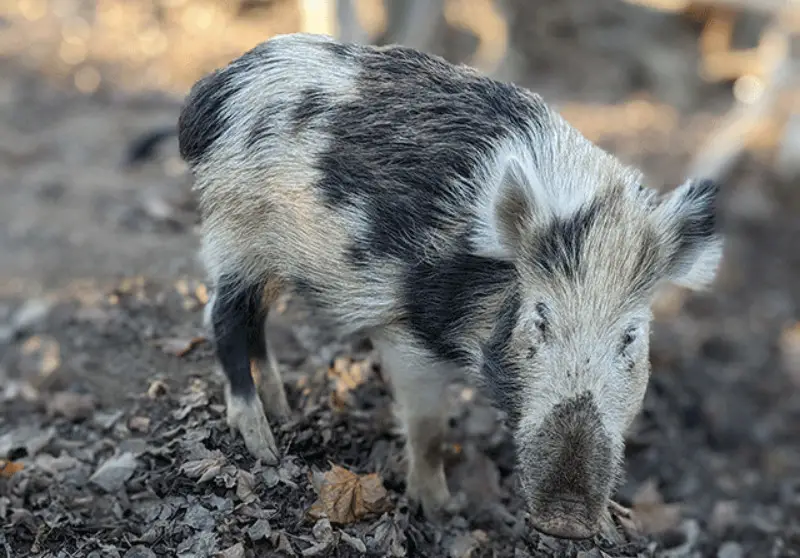
Identification and Physical Characteristics
Feral domestic pigs are descendants of domesticated pigs that have reverted to a wild state. Their appearance varies significantly depending on ancestry and environment. Some individuals retain the light pink or pale skin characteristic of farm pigs, while others develop the bristly, rugged coat of wild boars through interbreeding.
Adults generally weigh between 75 and 250 pounds, with rare specimens reaching up to 300 pounds. Compared to wild boars, feral domestic pigs usually have a rounder and more compact body shape and may lack the pronounced tusks seen in true wild boars. Their color can range widely from pink to black, often appearing patchy. In addition, feral pigs sometimes display signs of human feeding or scavenging behavior, which can help distinguish them from fully wild populations.
Behavior and Diet
Feral domestic pigs are highly adaptable omnivores that feed on a broad range of food sources. Their diet includes roots, tubers, crops, insects, small mammals, and bird eggs. Like wild boars, they are skilled at rooting in the soil, which not only helps them find food but also causes significant disturbance to the environment, including crop destruction and the spread of invasive plants.
Their behavior is flexible, often influenced by food availability. While they are primarily nocturnal, they may be active during the day if resources are abundant. Feral pigs often travel in small family groups, though solitary individuals are also observed. Their intelligence allows them to learn quickly, avoiding traps and navigating diverse habitats. They are also strong diggers and proficient swimmers, which contributes to their ability to colonize new areas.
Reproduction
Feral domestic pigs reach sexual maturity at around one year of age and have the capacity to breed throughout the year. Litter sizes typically range from four to twelve piglets.
This high reproductive potential enables feral pig populations to expand rapidly, creating considerable ecological and economic challenges in the regions where they are established. Their reproductive habits, combined with adaptability, make them one of the most prolific and resilient invasive mammals in North America.
Habitat in California
Feral domestic pigs are widespread throughout California, thriving in a variety of environments. They are commonly found in agricultural areas, forests, and even suburban neighborhoods where food and shelter are available.
The mild climate, abundance of resources, and lack of significant natural predators allow these pigs to maintain robust populations across much of the state. They can adapt to both rugged wilderness and human-modified landscapes, often moving between the two in search of food and water.
Ecological Impact
The presence of feral domestic pigs has significant ecological consequences. They compete directly with native wildlife for food and disrupt soil and water systems through their rooting behavior.
This disturbance promotes the spread of invasive plants and damages crops, native vegetation, and sensitive ecosystems. Additionally, feral pigs can carry diseases that threaten livestock, wildlife, and human health. Their impact is particularly pronounced in areas where they come into frequent contact with human activity or sensitive habitats.
Human Conflicts
Feral pigs frequently come into conflict with humans due to their feeding habits and physical strength. They can cause extensive damage to crops, gardens, and landscaping in residential areas.
Encounters with these animals can be dangerous because of their size, strong bodies, and sharp hooves. They also pose health risks, as they may carry diseases such as swine brucellosis, which can infect both humans and domestic livestock. Such conflicts underscore the need for careful management and public awareness.
Control Strategies
Managing feral domestic pig populations requires a combination of approaches. Techniques such as trapping, hunting, fencing, and exclusion are commonly employed to limit their numbers and prevent property damage.
Public education is also critical, as preventing intentional or accidental feeding can reduce support for feral populations. Long-term management strategies focus on reducing reproduction, limiting access to human food sources, and mitigating ecological damage, all while maintaining safety for humans and livestock.
Javelina (Collared Peccary)

Identification and Physical Characteristics
The javelina, also known as the collared peccary, is a smaller species related to pigs but with distinct physical traits. Adults stand about 20 inches tall and measure three to four feet in length, weighing between 35 and 55 pounds. They have coarse grayish fur with a distinctive white “collar” around the neck, which gives them their name.
Unlike true pigs, javelinas have smaller tusks and a slimmer, more elongated body. Their short, downward-pointing tusks are primarily used for defense rather than rooting. Compared to wild boars and feral domestic pigs, javelinas are lighter and more compact, making them easily distinguishable in the wild.
Behavior and Diet
Javelinas are highly social animals that typically live in herds ranging from a few individuals up to fifty. They are primarily herbivorous, feeding on fruits, seeds, cacti, and other plant materials. Despite their plant-based diet, their sharp canines serve as a defense mechanism and occasionally help them access tough vegetation.
These animals are generally diurnal but may shift to nocturnal activity in areas with high human disturbance. Herd members forage together in a coordinated manner, using scent-marking to communicate territory boundaries. They are known for strong social cohesion and can become aggressive if threatened.
Reproduction
Female javelinas reach sexual maturity at around one year of age. They usually give birth to a single offspring after a gestation period of approximately 150 days. Newborns are born with a spotted coat, providing effective camouflage within dense vegetation. Family bonds are strong, and the young remain with both their mother and herd for several months before becoming fully independent.
Habitat in California
Javelinas are mostly native to the southwestern United States, including parts of Arizona, New Mexico, and Texas, and they can occasionally be found in southeastern California. They prefer habitats with dense vegetation and ready access to water. Although they are not as widespread as Eurasian wild boars or feral domestic pigs, they still play an important ecological role within their habitats, contributing to seed dispersal and plant community dynamics.
Ecological Impact
Javelinas primarily influence their environment through selective feeding and trampling of vegetation. By consuming and dispersing seeds, they contribute to plant regeneration, although overpopulation in localized areas can reduce plant diversity. Compared to pigs, their foraging is less destructive since they do not root extensively, yet their presence still shapes habitat structures and affects local ecosystems.
Human Conflicts
Encounters with humans are relatively rare due to the limited distribution of javelinas in California. When they do venture into urban areas, they may cause minor garden damage and exhibit aggressive defensive behavior if cornered. Education on safe viewing practices and maintaining distance helps minimize conflicts with people.
Control Strategies
Management of javelinas focuses on habitat conservation, herd monitoring, and reducing access to urban food sources. Unlike Eurasian wild boars and feral domestic pigs, hunting pressure is limited because of their smaller population size and restricted distribution within the state. Long-term efforts prioritize coexistence while minimizing ecological and human impacts.
Comparison Table Feral Pigs in California
Feature |
Eurasian Wild Boar |
Feral Domestic Pig |
Javelina (Collared Peccary) |
|---|---|---|---|
Scientific Name |
Sus scrofa |
Sus scrofa (feral) |
Tayassu tajacu |
Size |
2.5 ft at shoulder |
2.5 ft at shoulder |
1.5 ft at shoulder |
Length |
Up to 6 ft |
Up to 5 ft |
3 to 4 ft |
Weight |
150–300 lbs |
75–250 lbs |
35–66 lbs |
Coat Color |
Dark brown to black |
Variable (pink to black) |
Gray with white collar |
Tusks |
Prominent, curved |
Less pronounced |
Small, downward-pointing |
Diet |
Omnivorous |
Omnivorous |
Herbivorous |
Habitat |
Woodlands, chaparral |
Agricultural lands |
Desert, grasslands |
Social Structure |
Solitary or small groups |
Solitary or small groups |
Herds up to 50 individuals |
Reproduction |
4–13 piglets per litter |
4–12 piglets per litter |
Single offspring per litter |
Conclusion
Feral pigs in California present complex challenges for wildlife management, agriculture, and human safety. The Eurasian wild boar and feral domestic pig are widespread and highly adaptable, capable of causing extensive ecological and economic damage. The javelina, while smaller and less widespread, contributes to the biodiversity of southwestern habitats. Understanding the differences among these three types of feral pigs—identification, behavior, diet, reproduction, and habitat—is essential for effective management and conservation strategies.
Successful control of feral pigs requires integrated approaches, including habitat management, trapping, fencing, regulated hunting, and public education. Awareness of each species’ unique traits helps reduce conflicts with humans, protect native ecosystems, and limit agricultural losses. By addressing these challenges proactively, Californians can coexist with wildlife while minimizing the negative impacts of feral pigs.
FAQs about Feral Pigs and Wild Boars in California
What is the difference between a Eurasian wild boar and a feral domestic pig?
Eurasian wild boars are larger, more muscular, and have thick, bristly fur with long curved tusks, especially in males. Feral domestic pigs are descendants of farm-raised pigs that have returned to the wild. They tend to have rounder bodies, lighter or patchy coloring, and smaller tusks. While wild boars are typically solitary or in small sounders, feral pigs may show more flexible social behavior and signs of human interaction.
Where can I find javelinas in California?
Javelinas are mostly found in the southwestern United States and occur only occasionally in southeastern California. They prefer areas with dense vegetation, water sources, and minimal human disturbance. Unlike feral pigs or Eurasian wild boars, their distribution is limited and more localized, often in desert scrublands or riparian corridors.
Are feral pigs dangerous to humans?
Yes, feral pigs and wild boars can be dangerous. They have strong bodies, sharp tusks or hooves, and may become aggressive if cornered, especially males during mating season. While javelinas are smaller, they can also defend themselves with sharp canines if threatened. Caution is advised when encountering any of these species in the wild.
What do these pigs eat?
All three species are omnivorous to some degree. Eurasian wild boars and feral domestic pigs have highly varied diets, including roots, tubers, fruits, small mammals, eggs, and occasionally carrion. Javelinas are mostly herbivorous, feeding on fruits, seeds, cacti, and other plant material, although their canines are used to forage tough vegetation and for defense.
How do these species affect California ecosystems?
Feral pigs and wild boars cause extensive ecological disturbance through rooting, trampling, and predation on small animals or eggs. Their activities promote soil erosion and invasive plant spread. Javelinas, while less destructive, still alter plant communities through selective feeding and trampling, and they play a role in seed dispersal. Collectively, these animals can significantly impact native vegetation and wildlife if populations are not managed.
Can feral pigs and javelinas transmit diseases?
Yes, all three species can carry diseases that pose risks to humans, livestock, and wildlife. Eurasian wild boars and feral pigs may transmit swine brucellosis, pseudorabies, and other infections. Javelinas can also carry diseases, although they are less studied due to their smaller populations. Proper management and avoiding contact are important to reduce health risks.
How are feral pigs and wild boars controlled in California?
Management strategies include trapping, hunting, fencing, and habitat modification. Public education helps prevent unintentional feeding, which supports feral populations. Javelinas are managed primarily through habitat conservation and herd monitoring, with less hunting pressure because of their smaller and more localized populations. Consistent efforts are required due to the high reproductive rates and adaptability of these animals.

